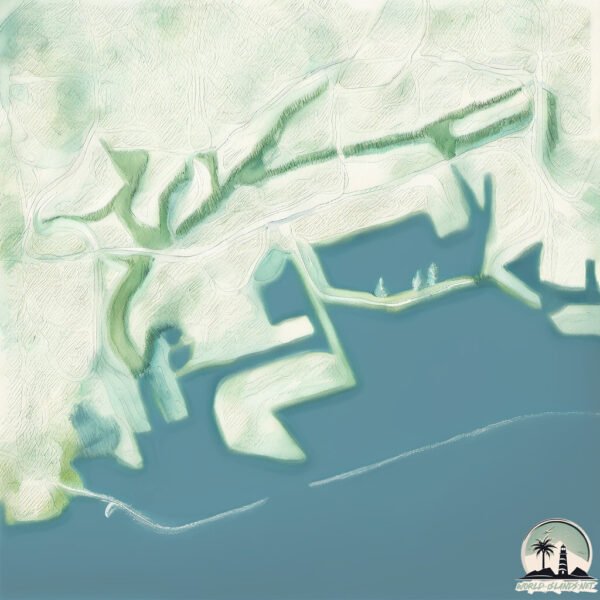Terminal

Welcome to Terminal, a Dry island in the North Pacific Ocean, part of the majestic Pacific Ocean. This guide offers a comprehensive overview of what makes Terminal unique – from its geography and climate to its population, infrastructure, and beyond. Dive into the details:
- Geography and Size: Explore the island’s size and location.
- Climate and Weather: Weather patterns and temperature.
- Topography and Nature: Uncover the natural wonders of the island.
- Infrastructure and Travelling: Insights on reaching, staying, and making the most of your visit.
- News and Headlines: Latest News.
Geography and size of Terminal
Size: 12.9 km²
Coastline: 44.6 km
Ocean: Pacific Ocean
Sea: North Pacific Ocean
Continent: North America
Terminal is a Medium Island spanning 13 km² with a coastline of 45 km.
Archipel: –
Tectonic Plate: North America – Covers North America and parts of the Atlantic and Arctic Oceans, characterized by diverse geological features and varying levels of seismic activity.
The geographic heart of the island is pinpointed at these coordinates:
Latitude: 33.74461495 / Longitude: -118.24900816
Climate and weather of Terminal
Climate Zone: Dry
Climate Details: Hot Semi-Arid (Steppe) Climate
Temperature: Hot
Climate Characteristics: Features hot summers and mild to warm winters. Receives more rainfall than hot deserts but less than tropical savannas, leading to a somewhat more varied landscape.
Topography and nature of Terminal
Timezone: UTC-08:00
Timezone places: America/Los_Angeles
Max. Elevation: 14 m
Mean Elevation: 5 m
Vegetation: Sparse Vegetation
Tree Coverage: 73%
The mean elevation is 5 m. The highest elevation on the island reaches approximately 14 meters above sea level. The island is characterized by Plains: Flat, low-lying lands characterized by a maximum elevation of up to 200 meters. On islands, plains are typically coastal lowlands or central flat areas.
Dominating Vegetation: Sparse Vegetation
These regions have limited plant growth, typically due to extreme conditions like aridity or poor soils. Vegetation is scattered and consists of hardy plant species. Terminal has a tree cover of 73 %.
Vegetation: 7 vegetation zones – Very Highly Diverse Island
Islands in this range are ecological powerhouses, showcasing a wide array of vegetation zones. Each zone, from lush rainforests to arid scrublands, coastal mangroves to mountainous regions, contributes to a complex and interdependent ecosystem. These islands are often hotspots of biodiversity, supporting numerous species and intricate ecological processes.
Infrastructure and Travelling to Terminal
Does the island have a public airport? no.
There is no public and scheduled airport on Terminal. The nearest airport is Long Beach Airport (Daugherty Field), located 10 km away.
Does the island have a major port? yes.
Terminal is home to a major port. The following ports are situated on the island: LOS ANGELES.
The mean population of Terminal is 10 per km². Terminal is Gently Populated. The island belongs to United States of America.
Continuing your journey, Santa Catalina is the next notable island, situated merely km away.
United States of America is classified as Developed region: G7: Group of Seven – Major advanced economies, including Canada, France, Germany, Italy, Japan, the United Kingdom, and the United States. The level of income is High income: OECD.
News – Latest Updates and Headlines from Terminal
Stay informed with the most recent news and important headlines from Terminal. Here’s a roundup of the latest developments.
Please note: The data used here has been primarily extracted from satellite readings. Deviations from exact values may occur, particularly regarding the height of elevations and population density. Land area and coastline measurements refer to average values at mean high tide.
